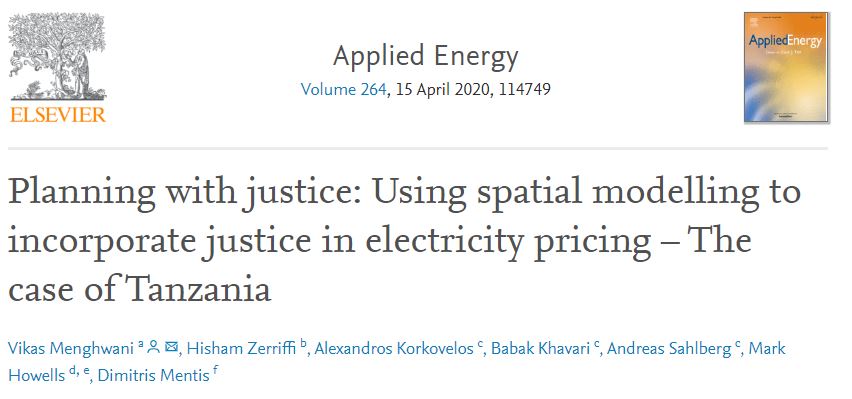New publication unsing the OnSSET tool

Planning with justice - Using spatial modelling to incorporate justice in electricity pricing – The case of Tanzania
Universal electrification by 2030 is an important goal of Sustainable Development Goal (SDG) 7. Electricity provision no longer relies only on centralized grid expansion, but also on off-grid and mini-grid systems. Although this technological diversity holds promise, the technologies differ both physically and institutionally in electricity delivery. These differences raise equity and justice concerns around how they are implemented. For example, how can electricity be kept affordable for all consumers when access is provided by various technologies operated under different business models? This paper addresses this aspect of affordability and sheds light on how the SDG7 target could be met more equitably and fairly. It uses a novel analytical methodology to apply two different principles of justice – equality and equity – to incorporate affordability into electricity pricing. Using a geospatial electrification model built on the
OnSSET
tool and Tanzania as a case study, it first arrive at price levels based on the principle(s) of justice. Then, it produce location-specific recommendations for subsidy levels needed to ensure those price levels.
The methodological framework proposed in this study, led by
UBC
researchers
Vikas Menghwani
and
Hisham Zerriffi
in collaboration with researchers from KTH,
WRI
and
Loughborough
, acts as a proof-of-concept for examining concerns around distributive justice using quantitative energy modelling tools and drawing policy relevant insights for energy planning in developing countries. Additionally, by focusing on the spatial aspects of energy access and the issue of fairness, the study also contributes to the growing conceptualizations of energy justice.
Find the full publication here
.

